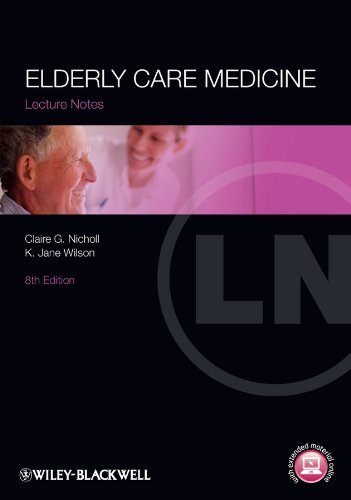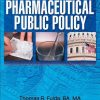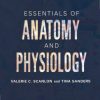Elderly care medicine 8th Edition by Claire Nicholl ISBN 0470654546 9780470654545
$50.00 Original price was: $50.00.$35.00Current price is: $35.00.
Elderly care medicine 8th Edition by Claire Nicholl – Ebook PDF Instant Download/Delivery: 0470654546, 9780470654545
Full download Elderly care medicine 8th Edition after payment

Product details:
ISBN 10: 0470654546
ISBN 13: 9780470654545
Author: Claire Nicholl
Elderly Care Medicine Lecture Notes provides all the necessary information, within one short volume, for a sound introduction to the particular characteristics and needs of elderly patients.
Presented in a user-friendly format, combining readability with high-quality illustrations, this eighth edition has been thoroughly revised to reflect advances in knowledge on how disease presents in elderly people, and changes in management practice, particularly regarding stroke, dementia, delirium, and cancer.
New for this edition, Elderly Care Medicine Lecture Notes also features:
More treatment tables and boxes throughout for rapid access and revision
Expansion of material on polypharmacy and prescribing
Discussion of emotional support, counselling and spirituality
Advice for doctors on breaking bad news and end-of-life care
Consideration of ethical and legal issues
A companion website at www.lecturenoteseries.com/elderlycaremed features appendices which can be used as guidelines in a clinical setting, key revision points for each chapter, further reading suggestions, and extended content for specialty training in geriatrics.
Not only is this book a great starting point to support initial teaching on the topic, but it is also easy to dip in and out of for reference or revision at the end of a module, rotation or final exams. Whether you need to develop or refresh your knowledge of geriatrics, Elderly Care Medicine Lecture Notes presents ‘need to know’ information for all those involved in treating elderly people.
Elderly care medicine 8th Table of contents:
1 The world grows old
Introduction
Population trends
Developed countries
Demographic changes
Medical services
Community services
Less developed countries
Demographic changes
Medical services
Community services
Ageing in India
Disease and disability in the over 60s in India
Ageing in Africa
Ageing in Brazil
Global warming
Global poverty
Inter-generational strife
Social aspects of ageing
Loss of wealth
Retirement
Some myths of ageing
REFERENCES
FURTHER INFORMATION
2 Health and social care for elderly people in the UK
How many older people are there?
Is life expectancy still increasing?
What is your life expectancy when you are old?
Does living longer mean more suffering in old age?
What are the characteristics of the older population?
Gender
Ethnicity
Geographic variation
Health status
Sensory impairment
Living companions
Income
Where do elderly people live?
Sheltered housing
Institutional care
What types of institutions are there?
Long-stay hospitals
NHS continuing care (NHS CC)
Care homes providing nursing care
Care homes providing personal care
Specialist homes for people with dementia
Who provides institutional care?
How is institutional care paid for?
How is care for older people organized?
Health care for older people
The organization of the NHS
General practitioners
Potentially preventable diseases in old age
Community nursing staff
Hospital care of older patients
Emergency department (ED)
Outpatient department
The department of medicine for the elderly
Mental health services for older people
Intermediate care
Roles of IC
Day hospitals
Social care for older people
When the person stays in their own home what types of care can be provided?
Twenty-four-hour care
Regular visits for care
Meals-on-wheels/frozen meals service
Luncheon clubs
Day centres
Respite care
Specialist equipment
Roving warden schemes
Regulation of health and social care
Who cares?
Strategies to improve care of older people
Recommendations of the NSF OP
Financial allowances that can be claimed by some UK pensioners
Basic state pension
Over 80 pension
Pension credit
Council tax benefit
Housing benefit
Attendance allowance (AA)
Extra money for carers
Prescription charges, sight tests and dental care
Health care travel costs
Blind person’s allowance
Keeping warm
Concessions
Christmas bonus
Social fund (community care grants)
Funeral expense payment
REFERENCES
FURTHER INFORMATION
3 Special features of medicine in the elderly
The ageing of populations
Blessing or curse?
The ageing process
The ageing cell
Ageing tissues
Immunity and ageing
Unifying hypothesis
Declining function
Special features of illness in older patients
Background of ageing
Why do ageing changes matter?
Multiple pathology and aetiology
Why do elderly people often have several diseases?
Different risk factors
Different susceptibility to disease
Different differential diagnoses
Altered response to disease
Low expectations
Why do older people sometimes present so late in their illness?
Social problems
Advantages and disadvantages of ‘labels’
The importance of functional assessment and rehabilitation
Rehabilitation
Rehabilitation from acute illness
Principles of rehabilitation
Barriers to successful rehabilitation
Ethical problems
Examination of the aged patient – things to look out for
Gait
Face
Joint disease
Self-neglect
Nutrition
Conversation
Formal examination
Pharmacological treatment: special considerations
Pharmacokinetics and pharmacodynamics
When problems arise there are often many causes
Multiple pathologies means multiple drugs
Reviewing the drugs – repeat prescriptions
Should a new drug be started?
How many drugs are reasonable?
Summary: the overall picture
Surgery in elderly patients
Emergency versus elective
Pre-operative care
Anaesthetic care
Post-operative care
Post-operative complications
Changes in the organization of surgical care
REFERENCES
FURTHER INFORMATION
4 Old age psychiatry
Age changes
Sleep
Factors that disturb sleep patterns
Problem drinking
Early-onset drinkers or survivors
Late-onset drinkers or reactors
Intermittent or binge drinkers
Problems linked to alcohol
Anxiety
Late-onset delusional disorder
Causes of hallucinations
Depression
Prevalence
Features
Management
Supportive
Drugs
Electroconvulsive therapy
Acute and chronic confusion
Delirium
Susceptibility factors
Precipitating factors
Intracranial
Extracranial
Consequences of illness and hospitalization
Clinical features of delirium (acute confusion)
Management
Dementia
What is dementia?
Causes of the dementia syndrome
How common is dementia?
What happens in dementia?
Why does dementia matter?
How is a diagnosis of dementia made?
Difficulties getting a diagnosis of dementia
Doctor factors
Patient/carer factors
Environmental factors
Cognition changes with age – what is normal and what is pathological?
Disease factors
The aims of a clinical assessment
Is it dementia?
What type of dementia is it?
History
Examination
Investigations
How is dementia managed?
Management of BPSD
Drug treatment
Recognition that dementia is a terminal illness
Alzheimer’s disease
Risk factors for Alzheimer’s disease
Protective factors for Alzheimer’s disease
Genetics and AD
Phases of AD
1. Asymptomatic preclinical phase (for research)
2. The symptomatic, pre-dementia phase (MCI due to AD)
Possible biomarkers for MCI-AD
3. The dementia phase
The metabolism of acetylcholine
Use of acetylcholinesterase inhibitors
Dementia with Lewy bodies
Frontotemporal dementias
Management
Vascular dementia
Transient global amnesia
Features
Self-neglect
Risk factors associated with self-neglect
REFERENCES
FURTHER INFORMATION
5 Falls and immobility
Falls
Age changes
Introduction
A simple mnemonic for falls
Intrinsic risk factors
History
Symptoms
Previous falls?
Location
Activity
Time
Trauma sustained
Determining the causes of falls
Examination
Baseline tests
Further investigations
Extrinsic risk factors
Sequelae of falls
Management
Falls in hospital
Dizziness
Immobility
Reasons for immobility
Management of immobility
Wheelchairs
REFERENCES
FURTHER INFORMATION
6 Bones, joints and muscles
Bones
Age changes
Osteoporosis
Risk factors
Clinical features
Investigations
Excluding causes of secondary osteoporosis
Complications
Prevention
Treatments
Concordance
Patient education .
Prevention of further fractures
Osteomalacia
Incidence
Causes
Clinical features
Investigations
Treatment
Paget’s disease of the bone
Incidence
Aetiology
Clinical features
Investigations
Complications
Treatment
Primary hyperparathyroidism
Incidence
Clinical features
Hypercalcaemia
Joints
Osteoarthritis
Pathophysiology
Symptoms
Signs
Radiological features
Treatment
Complications of joint replacement
Rheumatoid arthritis (RA)
Potential problems in the treatment of rheumatoid arthritis in elderly patients
Splinting of joints
Rehabilitation
Drugs
Crystal arthropathy
Infective arthropathy
Muscle pain
Polymyalgia rheumatica (PMR)
Epidemiology
Diagnostic criteria
Complications of untreated PMR
Treatment
Muscle weakness
Ageing changes
Muscle pathology in old age
Sarcopenia
Myopathies
Myositis
Myasthenia gravis
Investigation of muscle disease
Treatment
FURTHER INFORMATION
7 Stroke made simple
Importance
Definitions
Outcome of stroke
Aetiology and pathology
Presentation
Transient ischaemic attacks
Management of carotid disease
The established stroke
Clinical problems following stroke
Multi-infarct disease (dementia)
Cerebellar infarct or haematoma
Spinal cord infarction
Subarachnoid haemorrhage
Central venous thrombosis
Investigation of stroke
Management of the established ischaemic stroke
Where?
General care of acute stroke patients
Dispersing the thrombus
Results in the over 80s
Vasodilatation and cerebral oedema
Neuroprotection
Management of haemorrhagic stroke
Hydration and nutrition
Information for the family and patient
Palliative care
Rehabilitation
Primary and secondary prevention
Indicators of poor outcome
Driving after a stroke
Information on discharge from hospital
REFERENCES
FURTHER INFORMATION
8 Other diseases of the nervous system
Age changes and clinical examination
Symptomatic classification of neurological disease in the elderly
Aetiological classification
Vascular disease
Trauma
Fractured skull
Subdural haematoma
Cord compression
Lumbar canal stenosis
Normal pressure hydrocephalus (NPH)
Degenerative or idiopathic disease
Parkinson’s disease (PD)
Diagnosis
Management
Drugs
Notes on drug management
Non-motor features of PD
Invasive treatment in PD
Parkinsonian syndromes
Conditions allied to PD
Essential tremor (ET)
Restless legs (Ekbom’s syndrome)
Dementia with Lewy bodies
Progressive supranuclear palsy (PSP)
Multiple-system atrophy (MSA)
Corticobasal degeneration (CBD)
Motor neuron disease (MND)
Epilepsy in old age
Status epilepticus (SE)
Infective diseases of the CNS
Meningitis
Encephalitis
Guillain–Barré syndrome (GBS)
Poliomyelitis
Herpes zoster
Clinical features
Management
Malignant disease
Intracranial neoplasms
Non-metastatic disease of theCNS
Deficiency/toxicity states
Neuropathies
Entrapment neuropathies
Carpal tunnel syndrome
Meralgia paraesthetica
FURTHER INFORMATION
9 Cardiovascular disorders
Age changes
Manifestations
Coronary artery disease (CAD)
Managing cardiovascular disease in older people
Presentations
Chronic stable angina
Investigations
Management
Acute coronary syndromes (ACS)
Definition
ST-elevation myocardial infarction
Examination
Investigations
Management
Unstable angina and NSTEMI
Investigations
Management
Heart failure
Acute left ventricular failure
Clinical features
Investigations
Management
Chronic heart failure
Investigations
Treatment
Diastolic heart failure
Hypertension
Definition
Prevalence
Effects of hypertension
Effects of treatment
Treatment
Atrial fibrillation (AF)
Management
History
Examination
Investigations
Treatment
New developments
Atrial flutter
Pacing indications
Valvular heart disease
Mitral regurgitation
Calcific aortic stenosis
Infective endocarditis
Clinical features
Investigations
Management
Syncope, transient loss of consciousness (T-LOC)
Definition
History
Causes of a single episode
Causes of recurrent episodes
Carotid sinus massage
Indications for permanent pacemaker
Orthostatic (postural) hypotension
Investigations
Treatment
Vascular disease
Abdominal aortic aneurysm
Peripheral vascular disease
Clinical features
Diagnosis
Management
Giant-cell arteritis
Investigation
Treatment
Venous and pulmonary thromboembolic disease
Risk factors for pulmonary embolism
Pulmonary embolism
Investigation
Treatment of venous thromboembolism (VTE)
Duration of anticoagulation
REFERENCES
FURTHER INFORMATION
10 Respiratory disease
Age changes
Physiology
Examination
Upper respiratory tract infection
Acute breathlessness
Common causes of acute respiratory distress
Airway obstruction
Features of severe attack of airways obstruction requiring admission
Management of acute exacerbation of airway obstruction
Post-acute/chronic phase
Pneumonia
Pulmonary tuberculosis
Pleural effusion
Common causes
Management
Bronchiectasis
Carcinoma of the bronchus
Pleural plaques
Malignant mesothelioma
Interstitial lung disease
Causes
Features
Idiopathic pulmonary fibrosis (IPF)
Non-specific interstitial pneumonia (NSIP)
Cyrptogenic organizing pneumonia (COP)
Carbon monoxide poisoning
Incidence
Clinical features and sequelae
Causes
Management and prevention
FURTHER INFORMATION
11 Gastrointestinal disease and nutrition
Age changes
Unintentional weight loss
Dysphagia
Assessing dysphagia
History
Examination
Investigation
Management
Neuromuscular dysphagia
External pressure on the oesophagus
Inflammatory lesions of the oesophageal epithelium
Oesophagitis
Oesophageal candidiasis
Barrett’s oesophagus
Carcinoma of the oesophagus
Management
Intraluminal obstruction
Complications of dysphagia
Dyspepsia
Gastro-oesophageal reflux disease (GORD)
GI bleeding
Acute blood loss
Chronic blood loss
Suggested plan of investigation
Treatment
The acute abdomen
Useful pointers in the elderly acute abdomen
Bowel ischaemia
Associated factors/conditions
Clinical course
Treatment
Acute diarrhoea
Infective
Clostridium difficile associated diarrhoea (CDAD)
Symptoms
Examination
Investigations
Complications
Treatment
Prevention
Mandatory reporting
Chronic diarrhoea
Constipation
Management
Change in bowel habit
Faecal incontinence
Absorption
Indicators of malabsorption
Causes of malabsorption in old age
Coeliac disease
Diverticular disease
Endoscopy in the elderly
Percutaneous endoscopic gastrostomy (PEG)
Colonoscopy
CT Abdomen
CT Colonography
Jaundice
Chronic liver disease
Ageing changes in the liver
Alcoholic liver disease (ALD)
Non-alcoholic fatty liver disease (NAFLD)
Viral hepatitis
Autoimmune hepatitis
Primary biliary cirrhosis (PBC)
GI Malignancy
Oesophagus
Gastric carcinoma
Pancreatic carcinoma
Colo-rectal carcinoma
Clinical nutrition
General nutritional standards in elderly people in the UK
Subnutrition
Causes of nutritional deficiency
Assessment of nutritional status in old age
Dietary deficiencies in old age
Treatment of subnutrition in the community
Treatment of subnutrition in institutions
Overnutrition
REFERENCES
FURTHER INFORMATION
12 Disorders of homeostasis and metabolism
Age changes
Endocrine changes
Other hormonal changes
Fluid and electrolyte imbalance
Reasons for vulnerability to dehydration
Hyponatraemia
Hypernatraemia
Oedema
Hypokalaemia
Hyperkalaemia
Diabetes mellitus
Definition
Epidemiology
Mechanism
Effects
Management
Hyperosmolar crisis
Thyroid disease – function tests
Hyperthyroidism
Hypothyroidism
Adrenal disease
Cushing’s syndrome
Addison’s disease
Autonomic nervous system
Paraneoplastic endocrine syndromes
SIADH
Hypercalcaemia
Paraneoplastic Cushing’s syndrome
Hypoglycaemia
Accidental hypothermia
Clinical features
Management
Other dangers of extreme weather
REFERENCES
FURTHER INFORMATION
13 Genitourinary disease
Age changes
Acute kidney injury (AKI) in old age
Causes
History
Examination
Investigations
Management
Complications
Chronic kidney disease (CKD) in the elderly
Causes
Symptoms
Signs
Investigations
Management
Intrinsic renal disease
Urinary-tract infection (UTI)
Presentations of urosepsis in old age
Management
Obstructive nephropathy
Bladder outflow obstruction
Benign prostatic hyperplasia
Cancer of the prostate
Clinical features
Investigations
Treatment
Drugs and the kidneys
Blood pressure and the kidneys
Haematuria
Renal cell carcinoma
Risk factors
Symptoms
Signs
Investigations
Treatment
Bladder carcinoma
Symptoms
Signs
Investigations
Treatment
Urinary incontinence
Complications
Reversible causes
Assessing urinary incontinence
Types of incontinence
Management
Catheters
Indications
Complications
Vaginal bleeding
Vaginal prolapse
Disease of the vulva
Sex in old age
Advice for maintaining a healthy sex life in later life
REFERENCES
FURTHER INFORMATION
14 Blood and bone marrow
Age changes
Red blood cells
White blood cells
Plasma proteins
Anaemia
Haemopoiesis and ageing
Basic investigations
Clinical history and examination
Types and causes of anaemia
Iron-deficiency anaemia (microcytic)
Aetiology
History
Examination
Investigations
Treatment
Haemolytic anaemia
Deficiency states causing macrocytosis
Vitamin B12 deficiency
Pernicious anaemia
Clinical features
Diagnosis
Treatment of vitamin B12 deficiency
Folate deficiency
Clinical features
Diagnosis
Treatment
Hypothyroidism
Scurvy
Marrow dysfunction
Myelodysplastic syndromes (MDS)
Aplastic anaemia
Leucoerythroblastic anaemia
Anaemia of chronic disease
Mixed picture anaemias
Rheumatoid arthritis
Malignant disease
Chronic kidney disease
Alcohol abuse
Myeloproliferative disorders
Polycythaemia (rubra) vera
Essential thrombocytosis
Myelofibrosis
Leukaemias
Acute myeloid leukaemia (AML)
Acute lymphoblastic leukaemia (ALL)
Chronic lymphatic leukaemia (CLL)
Clinical features
Diagnosis
Treatment
Chronic myeloid leukaemia (CML)
Clinical features
Investigations
Progression and treatment
Myeloma
Clinical syndromes
Investigations
Treatment
Monoclonal gammopathy of unknown signi.cance (MGUS)
Lymphoma
Investigations
Treatment
Coagulation disorders
Clotting disorders
Bleeding disorders
Disseminated intravascular coagulation (DIC)
FURTHER INFORMATION
15 Eyes, ears, mouth and skin
Eyes
Age-related changes
Examination of the fundus in old age
Loss of vision
Criteria for being registered blind/ partially sighted
Advantages of being registered blind
The painful eye
Primary open angle/chronic glaucoma
Acute glaucoma
Age-related macular degeneration (AMD)
Driving
Cataracts
Types
Causes
Examination
Treatment
Giant-cell arteritis (GCA)
Clinical features
Ears
Ageing changes
Causes of hearing impairment
Management of hearing impairment
Advantages of digital hearing aids
Complications of deafness
Tinnitus
Dizziness
The mouth and its contents
The lips
Oral mucosa
Tongue abnormalities
The teeth
Skin
Age changes
Damage to skin
Leg ulcers
Treatment
Cellulitis
Pressure sores
Preventive measures
Encourage healing
Pruritus
An approach to management
Other important skin conditions in geriatric medicine
Malignant diseases of the skin
Basal-cell carcinoma (BCC)
Bowen’s disease: intraepidermal epithelioma
Squamous-cell carcinoma (SCC)
Malignant melanoma
Hair and nails
Age changes
Pathological changes
FURTHER INFORMATION
16 Legal and ethical aspects of medical care of elderly people
Driving in later life
Confidentiality
The Mental Capacity Act (MCA) 2005
Who needs to know about the MCA?
Serious medical treatment
Five principles underpinned by the MCA
Assessment of capacity
Advance decisions
Lasting power of attorney
Court of protection (2007)
Independent mental capacity advocates (IMCA)
The duties of an IMCA
Consent
Testamentary capacity
Emergency symptomatic treatment of the incompetent patient
Restraints
Environmental restraints
Deprivation of liberty
The Mental Health Act
Ethical issues relating to life-supporting interventions
Cardiopulmonary resuscitation (CPR)
The intensive therapy unit (ITU)
Invasive methods of nutrition and hydration
Age discrimination
Elder abuse
Detection
Action to be taken
Euthanasia
Death certification and the role of the coroner
Her majesty’s coroner
Coroners and death certification bill
REFERENCES
FURTHER INFORMATION
17 Palliative care
Age and place of death
Recognizing the last year of life
Advanced care planning (ACP)
Advanced decision to refuse treatment (ADRT)
Hospice care
Symptom control
Pain
Causes of pain requiring specific treatments
Restlessness and confusion
Nausea and vomiting
Anorexia and malaise related to hepatic metastases
Breathlessness
Offensive fungating tumours
Bowel obstruction
Other problems and some solutions
Diagnosing dying
The Liverpool integrated care pathway for the dying patient (LCP)
Syringe drivers
Spiritual and religious support
Considerations for people of different faiths
Emotional support
Enabling people to die at home
Care after death
Bereavement
People also search for Elderly care medicine 8th:
care of the elderly family medicine
what is elderly medicine
what is a care package for the elderly
what is a home care package for the elderly
elder care options for aging parents
Tags:
Claire Nicholl,Elderly,medicine



